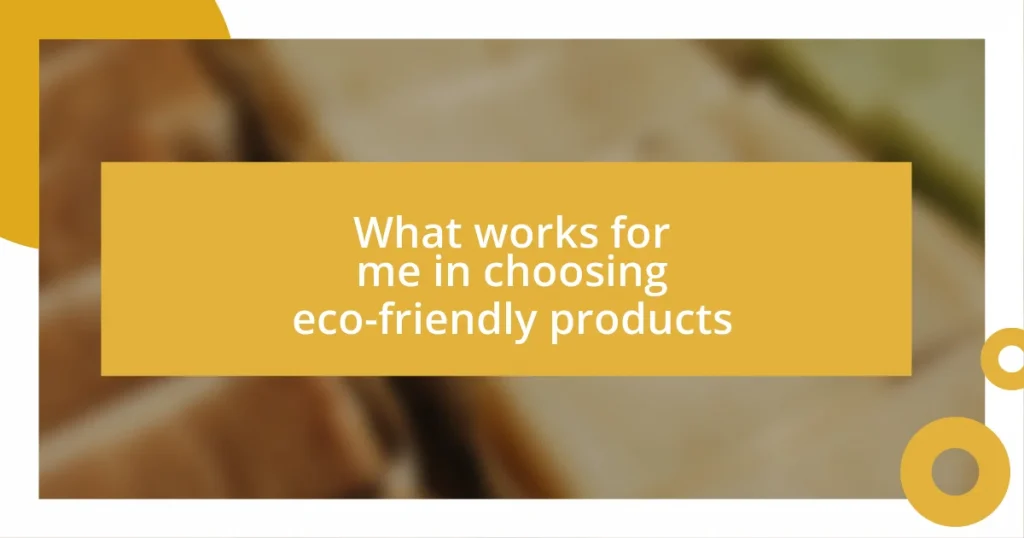Key takeaways:
- Understanding the balance of browns and greens, along with proper moisture levels, is crucial for successful composting.
- Composting kitchen scraps significantly reduces waste, enriches soil, and positively impacts the environment while providing cost savings.
- Regular maintenance, including turning the compost and monitoring for issues, is essential to maintain a healthy composting process.

Understanding composting basics
Composting simplifies the natural process of recycling organic matter and transforms kitchen scraps into nutrient-rich soil. I still remember the first time I flipped through my compost pile, discovering the rich, dark material hidden beneath layers of vegetable peels and coffee grounds. It felt like uncovering buried treasure!
To get started, it’s essential to understand the balance between browns (dry materials like leaves and cardboard) and greens (wet materials like fruit scraps and grass clippings). I always find it fascinating how this balance can impact the speed of decomposition—too much of one can lead to an unpleasant smell or slow down the process. Have you ever wondered why some compost piles seem to thrive while others languish?
Monitoring moisture is another key aspect. I’ve had my share of overly dry or soggy compost, and learning that sweet spot of moisture has transformed my composting experience. It’s like nurturing a living organism—when you get it right, the compost almost breathes with life!

Benefits of composting kitchen scraps
Composting kitchen scraps is not just beneficial for the environment; it brings a sense of satisfaction that’s hard to replicate. I distinctly remember the exhilaration I felt when I first used my homemade compost in my garden. Watching my plants thrive with the nutrients from scraps felt like I was giving them a special gift. It’s rewarding to know that I’m reducing waste while simultaneously enhancing the soil I nurture.
Here are some key benefits of composting kitchen scraps:
- Waste Reduction: Composting significantly reduces the amount of waste sent to landfills. Instead of tossing scraps, I’m creating something valuable from what would otherwise contribute to landfill overflow.
- Nutrient-Rich Soil: Kitchen scraps decompose into rich compost, providing essential nutrients for plants. I’ve seen my tomatoes yield more fruit when planted in my homemade compost compared to store-bought fertilizers.
- Environmental Impact: Composting helps reduce greenhouse gas emissions. I love knowing that my small actions help combat climate change.
- Cost Savings: Creating compost means I spend less on soil amendments and fertilizers. It’s like a little bit of extra cash in my pocket each gardening season.
- Soil Health: Compost enhances soil structure and promotes healthy microbial activity. I often notice that my plants are more resilient to pests and diseases since starting composting.

Choosing the right kitchen scraps
When it comes to choosing the right kitchen scraps, I’ve learned to be selective about what goes into my compost bin. High-nutrient scraps like vegetable peels, fruit cores, and coffee grounds work wonders. I remember experimenting with different types of scraps, and I found that adding eggshells not only helped balance the pH but also provided my compost with essential calcium, which my tomato plants thrived on!
However, it’s equally important to avoid certain kitchen scraps. I once made the mistake of including meat and dairy, thinking they would break down just fine. Not only did they create an awful smell, but they also attracted pests! I quickly realized that such materials can disrupt the balance and lead to a compost pile that’s more trouble than treasure. If you’re just starting out, sticking with the classic greens and browns is the way to go.
Over time, I’ve also discovered that cooking vegetable scraps, such as onion skins or carrot ends, can add a lovely complexity to my compost. It’s like layering flavors in a dish; every type of scrap contributes something unique. Have you thought about what scraps you often toss? Keep your composting goals in mind, and don’t hesitate to experiment with what your kitchen has to offer.
| Compostable Kitchen Scraps | Non-Compostable Kitchen Scraps |
|---|---|
| Vegetable Peels | Meat and Fish |
| Fruit Scraps | Dairy Products |
| Coffee Grounds | Oils and Grease |
| Eggshells | Pasta and Grains |

Preparing kitchen scraps for composting
Preparing kitchen scraps for composting is a key step in ensuring a successful composting experience. When I first started, I was so eager to dive in that I didn’t pay much attention to how I prepared my scraps. I learned quickly that chopping larger items into smaller pieces speeds up the decomposition process, allowing for a more efficient compost. Now, I take a moment to dice up my vegetable scraps before tossing them in—those little acts make a big difference!
I also developed a little routine that helps me stay organized. Every time I cook, I have a designated container for my scraps sitting next to me. It started as a simple bowl, but now it has become a beloved part of my kitchen. When I glance at the bowl filling up, I can’t help but feel excited about my composting journey. Have you considered how a small change like this could impact your experience?
One last tip that I found invaluable is to keep my scraps balanced between “greens” and “browns.” Greens are things like vegetable peels and coffee grounds, while browns include dry leaves or cardboard. Initially, I didn’t think much about this balance and ended up with a soggy mess. But now, whenever I make a fresh batch, I think of it as crafting a recipe—just the right blend creates something truly beneficial for my garden. Balancing these ingredients has transformed my composting efforts, and there’s nothing quite like knowing I’ve perfected my own little nutrient-rich concoction!

Maintaining your compost pile
Maintaining your compost pile is a dynamic and enjoyable part of the composting process. I’ve found that turning my pile regularly not only aerates it but also speeds up decomposition. It’s like giving my compost a little workout—it gets the air and moisture flowing, which has led to richer and faster breakdown of materials. Have you ever thought about how a simple turn can transform that heap of scraps into something so valuable?
Another thing I’ve learned is to monitor moisture levels closely. I remember one time when my pile became too dry; it felt like a desert instead of the thriving environment I wanted. So now, I check it regularly and sprinkle some water if it seems parched, which helps keep that perfect balance. If you’re just starting out, it’s worth keeping a spray bottle handy—just a few pumps can make a world of difference.
Lastly, I like to observe the temperature of my compost. When it heats up, it’s a great sign that the materials are breaking down. I vividly recall that satisfying feeling when I touched a warm corner of the pile after incorporating coffee grounds and banana peels. It was as if my compost was alive and thriving! Understanding these little nuances makes the journey of composting feel so much more rewarding, don’t you think?

Troubleshooting common compost issues
Occasionally, my compost would give off an unpleasant odor, and I had no idea what was going wrong. I learned that a telling sign of imbalance could be that smell, often resulting from too many greens or insufficient aeration. By adding more browns, like dry leaves, and turning the pile more frequently, I noticed a remarkable improvement. Have you ever experienced that initial shock of a stinky compost? It’s a wake-up call to tune in and adjust your approach.
Another issue I faced was dealing with pesky fruit flies. At first, I felt overwhelmed and didn’t know if my efforts were worth the hassle. But a simple solution was to bury food scraps deeper in the pile, which not only deterred those little invaders but also sped up decomposition. Now, whenever I toss in banana peels, I make a point to dig down and create a cozy spot for them, and it feels great knowing that I’m keeping both my compost and kitchen environment happy!
Lastly, I recall a time when my pile was stagnant. It seemed lifeless, and I began to doubt my composting journey. My breakthrough came from adding some fresh greens and giving it a good turn. Watching that pile come alive again was exhilarating! The energy of a well-maintained compost is palpable—it’s like a small ecosystem thriving right in my backyard. Have you felt that sense of triumph when things start clicking into place? It reinforces my belief that troubleshooting is part of the adventure!

Using compost in your garden
Using compost in your garden can be a game changer for your plants. Just last spring, I decided to incorporate my homemade compost into my vegetable beds, and the difference was astounding. I remember planting tomatoes and watching them flourish with a vibrancy I hadn’t experienced before. The rich, dark compost seemed to give them an energy boost, making me wonder how much untapped potential lies in taking what was once waste and transforming it into life-giving nourishment.
There’s something undeniably satisfying about digging into a freshly composted garden bed. I’ll never forget the feeling of that earthy aroma wafting up as I mixed it in, almost like a welcoming embrace for the seeds I was about to plant. Using compost also improves soil structure, and I genuinely felt the texture change in my hands as I worked it into the ground. It was like turning a pile of sand into a soft, sponge-like mixture; I knew my plants would thrive in that environment.
As I watched my garden grow throughout the season, I found myself reflecting on the journey of those kitchen scraps. Each blossom and fruit was a vivid reminder of how effective composting can be—not just for the environment, but for nurturing our connection with nature. Have you ever seen the direct impact of your compost in your garden? I think it’s a beautiful cycle, one that reinforces why I’m so passionate about composting in the first place.















